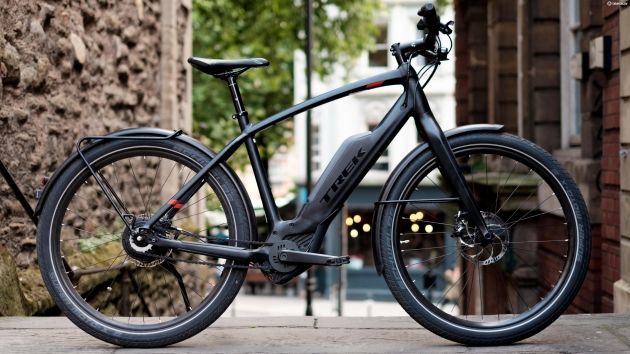
Choosing an electric bike can be a daunting task. After all, the market is filled with many different models and features. But before you spend your hard earned money on an electric bike, make sure you do your research first. Here are some of the factors you should look for.
Range
Probably the biggest question on people’s minds when it comes to an electric bike is the range. Depending on the style and terrain, the range of an electric bike can range from 15 miles to over 100 miles. It’s important to remember that the range you get depends on many factors, such as terrain, weight, speed, and other riders.
The most important factor to consider when measuring the range of your e-bike is the battery capacity. Batteries are typically rated in watt-hours or amp-hours. The battery capacity can also be measured in volts. The higher the volts and amp-hours, the longer the ride.
A battery’s capacity will also change over time. If you have an older battery, it will have a lower capacity. This means that it will have to work harder to supply you with the same amount of power. You’ll need to charge your battery regularly, especially if you’re going to be riding at a fast speed.
The other thing to consider is how much you weigh. The more you weigh, the shorter your range. You can use the same battery for a longer period of time if you are light on your feet.
A bike’s range can be claimed by the manufacturer, but it’s not a guarantee. The range claimed by the bike may be inflated, or may be inaccurate. If you are shopping for an electric bike, ask your dealer about the range calculation and testing.
Battery life
Choosing the right electric bike battery is important. You need to make sure you get one that meets your budget and fits your needs. Choosing the wrong battery can mean a shorter lifespan.
Having a battery with a good range is important. If you are going to be using the bike for a long distance, you will need the best range. Choosing the right battery size is also important. A larger battery will allow you to go further on a single charge.
A higher voltage battery may also be a good idea. A higher voltage will give you a boost on hills. However, it will also mean less range. You should also consider how long it will take to charge. If you’re on a tight budget, you can save money by getting a cheaper battery.
The watt hours per mile is a good way to calculate the range of a battery. A battery with a higher number of watts per mile will give you a longer life.
Another good choice is a frame-integrated battery. These are becoming more popular. They make it easier to swap out batteries mid-ride. You may also want to consider a battery with water resistance. It will be useful if you’re planning to ride in rainy areas.
While the battery is an important part of your purchase, you should also consider the size, water resistance, and battery voltage.
Folding option
Choosing an electric bike can be a daunting task. There are many factors to consider, including battery range, weight, and style. Whether you are looking for an ebike for recreational use or commute, you need to consider the type of terrain you will be riding on.
If you use your bike for short distances, you will probably want to buy a bike with a higher battery range. This will help you cover shorter distances without needing to recharge the battery. But if you plan to cover long distances, you may want a bike with larger wheels. The range will also depend on the type of battery you buy.
If you use your bike for commuting, you will want to buy a bike with a high quality braking system. This is particularly important if you are riding in traffic. Hydraulic disc brakes are ideal, as they provide enough force to slow the bike down.
The best folding electric bikes are lightweight and fast. These bikes also have high-quality components, such as hydraulic disc brakes and an electronic instrument panel. You can also get an e-bike that has a range of more than 40 miles.
Folding bikes are more compact than regular bikes, so they can fit into tight spaces. These bikes can also be stored in the trunk of your car. However, they can be more expensive.
Electric bicycles have grown in popularity in recent years, with global adoption increasing. This is because of the rising cost of gas and environmental pollution.
Tyres
Choosing the right tyres for an electric bike is crucial. This will affect your speed, range, handling, and grip. It is also important to understand that the best tyres for your needs will depend on how you ride your bike.
For example, fat tires can handle more force during braking and acceleration. This is important for electric bikes since the motor delivers more torque and is used to power the drive wheel.
Fat tires also last longer than narrow tires and are less likely to puncture. However, they also have some disadvantages. First, they dig into loose surfaces. They are also more likely to be damaged while riding on off-road routes. Another problem is the material used for these tires wears out faster than expected.
In addition, e-bike tires need to be able to handle more force during acceleration and braking, and be able to sustain higher speeds for longer periods. This is not always easy to do.
In addition, e-bike tyres should be designed for mixed surfaces such as city streets with water. It is also important to consider the tire pressure. The manufacturer usually prints the recommended minimum and maximum pressure values on the sidewall. Taking care to use the proper pressure will prevent a flat tire.
Other factors to consider include the amount of storage space you have for your e-bike. For example, if you need to carry your bike on public transportation, you will need to ensure that it can fit in your rack. The size of your e-bike will also play a role in determining the size of your tire.
Lithium-ion battery
Choosing the right lithium-ion battery for an electric bike is a key consideration. There are a number of factors to consider, such as the battery’s range, ampere rating, charging rate and the depth of discharge.
Batteries can last up to two years, if you care for them properly. You should charge them up to 50% before storing them. You should also keep them topped up all the time to ensure they stay in good working condition. It’s important to choose a battery that fits the overall look and feel of your electric bike.
The size of your battery is also important, as larger batteries will provide you with more range per charge. For example, a 48V, 61Ah battery would be ideal for an electric bike.
Lithium-ion batteries have an advantage over lead-acid batteries in that they have higher energy density. They are also more durable. However, they are not always better for you because they tend to lose capacity over time. They can also be very expensive. You should check the manufacturer’s warranty to determine if it will cover your battery.
Whether you use a lithium or lead-acid battery, the length of its life will depend on many factors. The best lithium batteries will have about 400 cycles, compared to 250 to 400 for lead-acid batteries.
However, if you want to go for a more powerful battery, you’ll need to choose one that has a higher ampere rating. Batteries with higher amperes also require thicker gauge wires and a bigger battery pack. You should also pay attention to the depth of discharge, because a deep discharge reduces the battery’s capacity.

